Introduction: Why Banana Bread is Everyone’s Favorite
Banana bread is a timeless classic loved by home bakers and food enthusiasts alike. Whether you’re looking to rescue those overripe bananas sitting on your counter or craving a deliciously moist treat, banana bread never disappoints. It’s the perfect blend of sweet, comforting flavors and a soft, tender texture that makes it an all-time favorite.
What’s even better? Banana bread is incredibly versatile! From simple, classic recipes to healthier variations packed with nuts, whole grains, or even chocolate chips, there’s a version for everyone. With just a handful of pantry staples, you can whip up a loaf that’s perfect for breakfast, a midday snack, or even dessert.
In this post, you’ll discover the secrets to making the perfect banana bread every time. Whether you’re a beginner or a seasoned baker, follow along as we share the best ingredients, tips, and step-by-step instructions to create a loaf that’s moist, flavorful, and utterly irresistible. Let’s dive in!
Ingredients for the Perfect Banana Bread Recipe
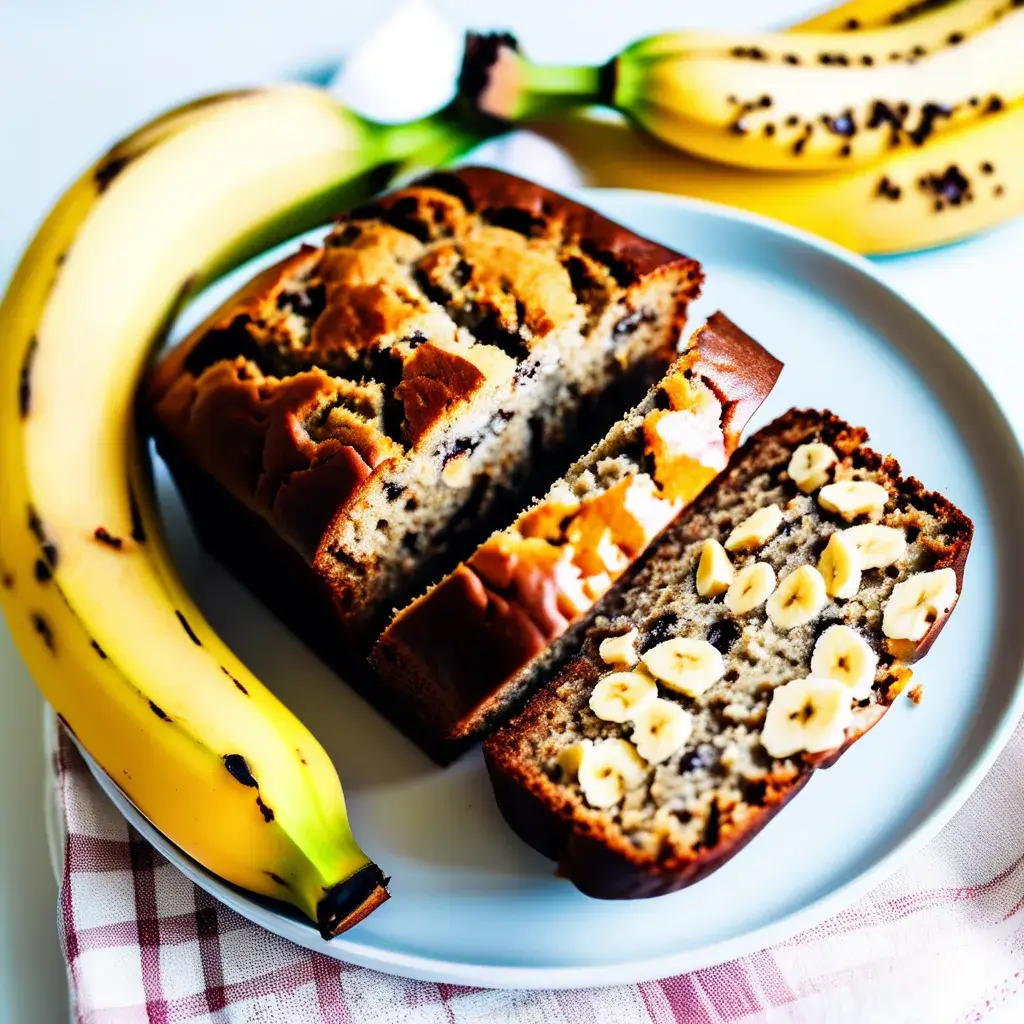
For a step-by-step guide and additional tips, check out this amazing resource:
Ingredients for the Perfect Banana Bread Recipe – Natasha’s Kitchen
This detailed recipe includes a video tutorial to help you create the most delicious and moist banana bread. Don’t miss out on expert tips and techniques!
Key Ingredients for Moist Banana Bread
- Ripe Bananas:
Ripe bananas are the cornerstone of a moist, flavorful banana bread. The ripeness of the bananas directly affects both flavor and texture. Overripe bananas, with lots of brown spots, have higher sugar content and are naturally softer. These sugars contribute to the moistness of the bread while providing a rich, deep banana flavor. The more ripe (or even overripe) your bananas, the better the result. In fact, using bananas that are a bit past their prime, when they’re brown and spotty, makes the bread sweeter and more aromatic. - All-Purpose Flour & Baking Soda:
All-purpose flour provides the bread with a neutral structure, ensuring it has a pleasant, soft crumb without being too dense or heavy. Combined with baking soda, these ingredients give the bread the lift it needs to rise. Baking soda acts as a leavening agent by reacting with the natural acidity in the bananas, creating bubbles of air that make the bread light and fluffy. These two ingredients form the foundation of any good banana bread, so using the right amount is crucial for texture. - Brown Sugar or Natural Sweeteners:
Brown sugar gives banana bread a rich, caramel-like flavor, enhancing the depth of sweetness in the recipe. Its slight molasses content contributes to the moistness of the bread. If you’re looking for alternative sweeteners, you can use honey, maple syrup, or agave nectar, which lend their own subtle flavors to the bread. For those mindful of glycemic index, coconut sugar is a great substitute for brown sugar as it is lower on the glycemic scale. Additionally, stevia or monk fruit sweeteners are natural, low-calorie options for a sugar-free alternative.
Optional Add-Ins for Variety
- Chocolate Chips, Nuts, or Cinnamon:
Adding chocolate chips—either dark or semi-sweet—can turn a simple banana bread into a decadent treat. Chocolate and banana are a classic combination, with the bitterness of dark chocolate balancing the sweetness of the bananas.
For added texture and crunch, nuts like walnuts or pecans are perfect choices. They introduce a toasty, nutty flavor that contrasts with the soft, moist bread.
Cinnamon is another popular add-in. It not only pairs beautifully with bananas but also infuses the bread with a warm, spicy aroma. A touch of cinnamon can elevate the flavor profile and make the bread even more comforting. - Alternative Options:
For those who like to experiment, there are several other options to add to your banana bread. Dried fruits, such as raisins, cranberries, or chopped dates, can introduce a chewy texture and a burst of sweetness.
Coconut flakes offer a tropical twist, while seeds like chia, pumpkin, or sunflower can add a slight crunch and boost the nutritional value. These add-ins contribute both flavor and texture diversity to the bread.
Substitutions for Healthier Banana Bread
- Whole Wheat or Almond Flour:
Whole wheat flour is a great choice if you want to increase the fiber content of your banana bread. It gives the bread a slightly denser texture but adds more nutrients. It’s a good option for those looking for a healthier alternative to refined white flour.
If you’re gluten-free, almond flour is an excellent substitute. It’s rich in healthy fats and protein, contributing to the bread’s moisture and texture. Almond flour also has a slightly nutty flavor, which can enhance the overall taste of the banana bread. - Coconut Oil or Unsalted Butter Alternatives:
For a healthier fat choice, you can swap unsalted butter for coconut oil. Coconut oil adds a subtle coconut flavor and has a higher level of healthy fats compared to butter. It also helps to keep the banana bread moist.
Alternatively, using applesauce in place of oil can reduce the fat content of the bread while still keeping it moist. Applesauce is a common ingredient in healthier baked goods, as it provides moisture without the need for added fat. - Sugar-Free or Vegan Options:
For those looking to avoid refined sugar, stevia or monk fruit sweetener are excellent sugar-free options that provide sweetness without the calories or impact on blood sugar. These sweeteners are natural and work well in banana bread recipes.
If you’re making vegan banana bread, you can easily replace eggs with flax eggs (made by mixing ground flaxseeds with water) or chia eggs. You’ll also want to make sure to use plant-based milk such as almond milk, oat milk, or coconut milk to replace regular dairy milk. These substitutions make banana bread accessible for those with dietary restrictions, without compromising on flavor.
Step-by-Step Guide: How to Make Banana Bread
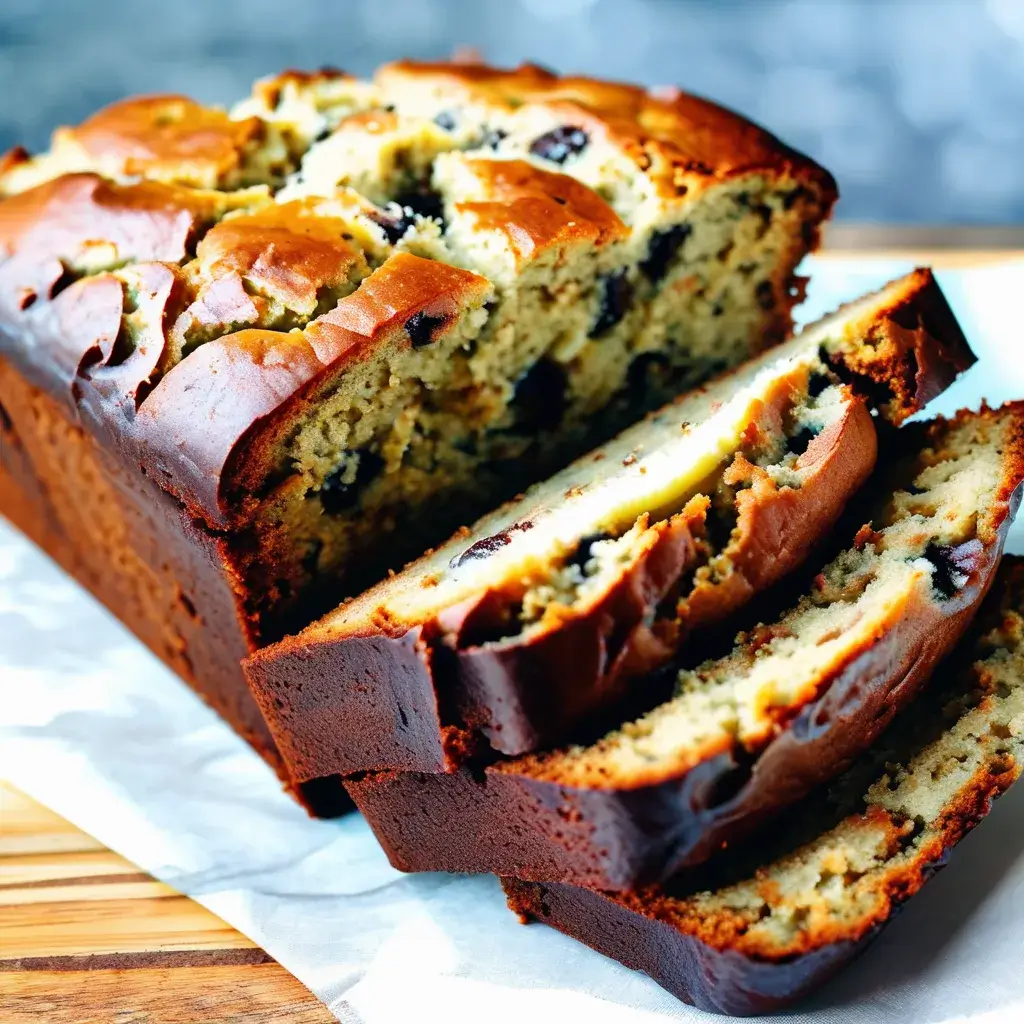
Preparing Your Ingredients
How to Properly Mash Bananas and Measure Ingredients:
Begin by selecting your bananas. The riper they are, the better your banana bread will taste. To mash bananas, simply peel them and place them in a bowl. Use a fork or potato masher to mash them until smooth with a few small lumps. Aim for about 1 1/2 to 2 cups of mashed bananas, depending on the recipe.
When measuring your dry ingredients (flour, baking soda, salt), it’s important to use the correct technique. Spoon the flour into your measuring cup, and then level it off with a flat edge. This ensures you don’t pack too much flour into the cup, which can lead to dense bread. For wet ingredients (sugar, butter, eggs, etc.), measure them separately, ensuring the right quantities for the perfect consistency.
Importance of Room Temperature Eggs and Butter/Oil:
Both eggs and butter (or oil) should be at room temperature when making banana bread. Cold eggs or butter can cause the batter to curdle, resulting in a less smooth texture. To bring butter to room temperature quickly, cut it into smaller pieces and leave it on the counter for 10–15 minutes. Eggs should be left out for about 30 minutes to warm up. If you’re in a hurry, placing eggs in a bowl of warm water for 10–15 minutes will speed up the process.
Mixing the Batter
Combining Wet and Dry Ingredients (Don’t Overmix!):
Start by creaming your butter (or oil) and sugar together in a large bowl, using a mixer or whisk. Once creamed, beat in your eggs, followed by the mashed bananas, vanilla extract, and any other liquid ingredients. Mix until just combined.
In a separate bowl, whisk together your dry ingredients: flour, baking soda, salt, and any spices like cinnamon. Gradually add the dry ingredients to the wet mixture, stirring gently with a spatula or wooden spoon. Be cautious not to overmix the batter—mixing it too much can cause the bread to become dense. Stir until the flour is just incorporated. A few lumps are fine!
Dients like Nuts or Chocolate Chips:
Once the basic batter is ready, it’s time to add any optional ingredients. Fold in nuts (walnuts, pecans), chocolate chips, dried fruit, or seeds. These ingredients should be gently mixed into the batter to ensure they’re evenly distributed but without overworking the dough.
Baking Your Banana Bread
Greasing the Loaf Pan and Setting the Oven Temperature:
Prepare your loaf pan by greasing it with butter or oil, or lining it with parchment paper for easy removal. This ensures the banana bread won’t stick to the sides of the pan during baking. For a slightly crispier crust, you can also dust the greased pan with a light sprinkle of flour.
Preheat your oven to the right temperature—usually around 350°F (175°C). A steady, moderate heat is ideal for banana bread, allowing the center to cook without burning the edges. Make sure the oven is fully preheated before placing your loaf pan inside.
Ideal Baking Time and How to Test for Doneness:
Bake the banana bread for 60 to 70 minutes (depending on the size of your loaf pan and your oven). The bread will puff up and turn golden brown as it bakes, filling your kitchen with a wonderful aroma. However, every oven is different, so baking times may vary slightly.
To test for doneness, insert a toothpick or cake tester into the center of the loaf. If it comes out clean (or with just a few moist crumbs attached), your banana bread is done. If the toothpick comes out with batter stuck to it, continue baking for another 5-10 minutes and test again.
For the perfect loaf, it’s important not to open the oven door too early—doing so can cause the loaf to sink. Only check it after about 50 minutes to avoid disturbing the rise.
Cooling:
Once your banana bread is done, remove it from the oven and let it cool in the pan for about 10 minutes. Afterward, transfer it to a wire rack to cool completely. Allowing it to cool ensures the loaf holds its shape and allows the flavors to develop further. While the bread may be tempting to slice hot out of the oven, waiting until it’s fully cooled gives the texture a chance to set perfectly.
Tips and Tricks for the Perfect Loaf Every Time
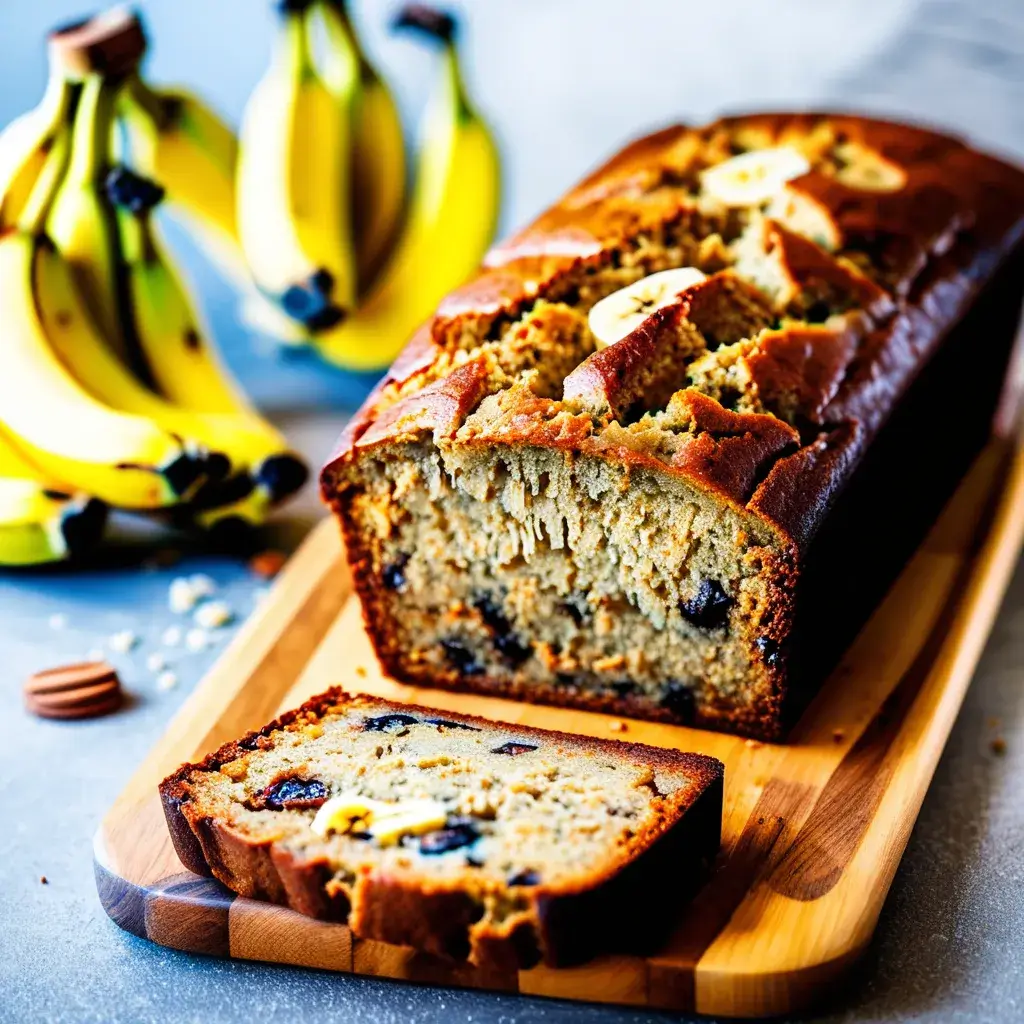
Achieving Moist Banana Bread
- Use Overripe Bananas and Measure Ingredients Accurately:
Overripe bananas are the secret to moist, flavorful banana bread. Their high sugar content and natural softness create a rich texture, while the intense banana flavor makes the bread delicious. Make sure to measure your ingredients accurately, especially when it comes to flour, sugar, and baking soda. Too much flour can result in a dry loaf, while improper amounts of baking soda can affect the rise. Stick to the measurements in your recipe for the best results. - Avoid Overmixing the Batter to Prevent Dryness:
One of the most common mistakes in baking banana bread is overmixing the batter. Overmixing activates the gluten in the flour, which can result in a dense and dry loaf. Stir the wet and dry ingredients together just until they’re combined. It’s okay if there are a few lumps in the batter—this is normal! The key is to mix gently, and don’t overdo it.
Avoiding Common Mistakes
- Preventing the Loaf from Sinking in the Middle:
A loaf that sinks in the middle is usually caused by overmixing the batter or opening the oven door too early. To avoid this, make sure to mix the ingredients just enough and not to overwork the dough. Also, ensure that your oven is fully preheated before placing the loaf inside, and try not to open the oven door in the first 50 minutes of baking. Sudden temperature changes can cause the loaf to collapse. - How to Avoid a Burnt Top with an Undercooked Center:
This common problem can be avoided by adjusting the baking temperature and time. If the top of your banana bread is getting too dark before the center is fully cooked, you can reduce the oven temperature by 25°F (about 15°C). Cover the top of the loaf with foil for the last 15–20 minutes of baking to prevent it from burning while the center continues to cook. Additionally, using a darker loaf pan can cause the bread to bake too quickly on the outside, so a lighter-colored pan is often a better choice.
Storing and Freezing Banana Bread
- Best Practices for Keeping It Fresh:
To keep banana bread fresh, store it at room temperature in an airtight container. If the bread is fully cooled, you can also wrap it tightly in plastic wrap or aluminum foil to prevent it from drying out. A loaf of banana bread typically stays fresh for about 3–4 days when stored in this way. If you prefer a firmer crust, you can leave it uncovered, but it will lose moisture more quickly. For longer storage, you can freeze banana bread. - How to Freeze Banana Bread for Future Enjoyment:
Freezing banana bread is an excellent way to preserve it for later enjoyment. To freeze, slice the bread and wrap each slice individually in plastic wrap or parchment paper, then place the wrapped slices in a freezer-safe bag or container. This allows you to pull out individual slices as needed. If you want to freeze the whole loaf, wrap it tightly in plastic wrap and then aluminum foil to protect it from freezer burn. Frozen banana bread can be stored for up to 3 months. To defrost, leave it at room temperature for a few hours, or you can heat it in the microwave for a few seconds for a warm treat.
Recipe Variations and Creative Twists
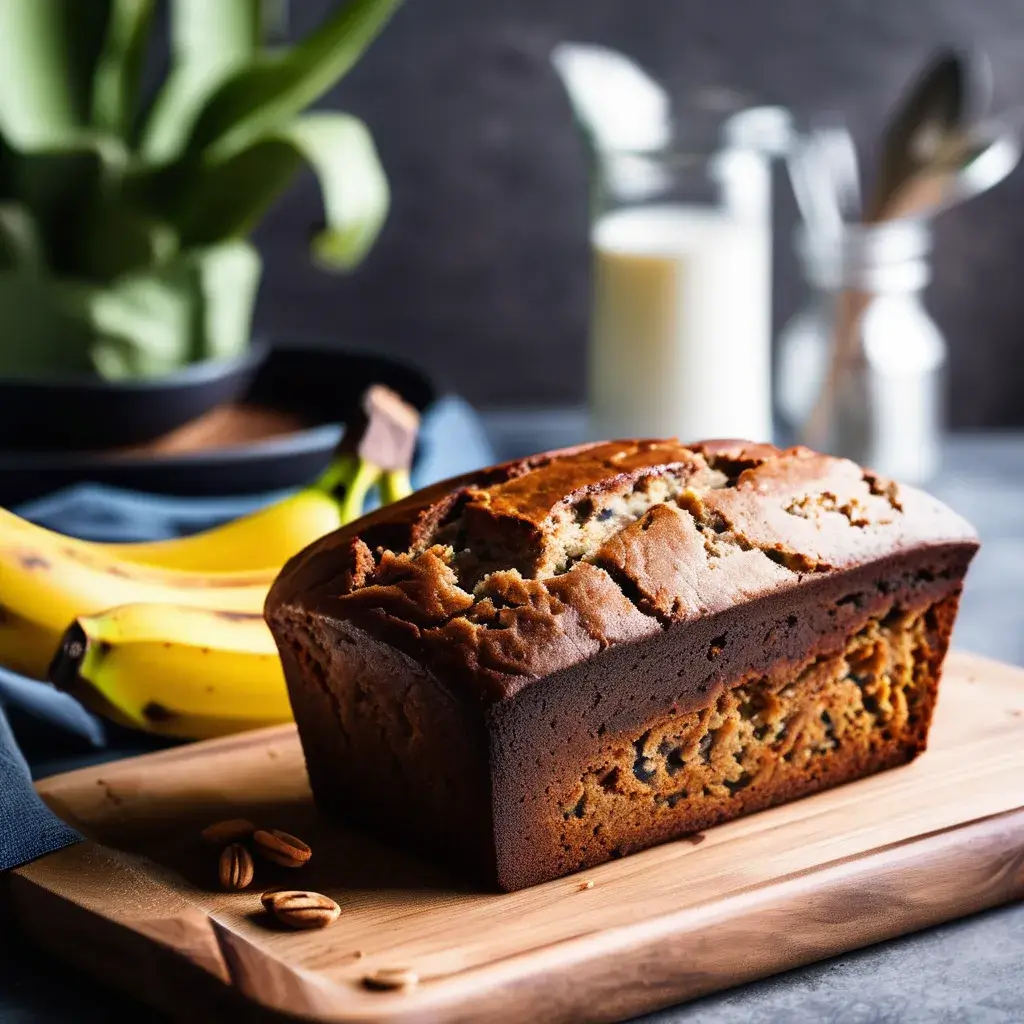
Healthy Banana Bread Recipe Variations
- Vegan Banana Bread:
To make banana bread vegan, replace eggs with flax eggs or chia eggs (1 tablespoon of ground flax or chia seeds mixed with 2.5 tablespoons of water per egg). Swap dairy milk with plant-based alternatives like almond, oat, or coconut milk. Use coconut oil or a vegan butter substitute instead of regular butter. This variation ensures the bread is plant-based without compromising flavor or texture. - Gluten-Free Banana Bread:
For a gluten-free version, substitute all-purpose flour with almond flour, oat flour, or a gluten-free flour blend. Almond flour gives the bread a moist, slightly dense texture, while oat flour adds a hearty, nutty flavor. Ensure that your baking soda and other ingredients are certified gluten-free to avoid cross-contamination.
Flavor Enhancements
- Adding Spices Like Nutmeg or Cardamom:
Elevate your banana bread by incorporating warm spices. A pinch of nutmeg, cardamom, or allspice adds depth to the flavor profile, complementing the natural sweetness of the bananas. These spices pair especially well with cinnamon for a cozy, aromatic loaf. - Swirls of Peanut Butter or Cream Cheese:
For a creative twist, add a swirl of peanut butter or cream cheese to your batter. After pouring half of the batter into the pan, spoon small dollops of peanut butter or cream cheese onto it and swirl them gently with a knife. Top with the remaining batter and bake. The result is a marbled loaf with bursts of creamy, rich flavor.
Creative Uses for Banana Bread
- Transform Into Banana Bread French Toast:
Leftover banana bread makes an indulgent French toast. Slice the bread into thick pieces, dip them in a mixture of beaten eggs, milk, and vanilla, then cook in a skillet until golden brown. Serve with syrup, fresh fruit, or a sprinkle of powdered sugar for a breakfast treat that’s hard to beat. - Serve with Whipped Cream or Caramel Sauce:
For a dessert-worthy banana bread experience, top a slice with a dollop of whipped cream or a drizzle of caramel sauce. Add a sprinkle of chopped nuts or chocolate chips for extra decadence. This presentation turns a simple loaf into a show-stopping dessert!
Conclusion
Baking banana bread is as much about the process as it is about the delicious results. Let’s quickly recap the key tips for success:
- Use overripe bananas for that perfect moist texture and rich banana flavor.
- Measure ingredients accurately and avoid overmixing to keep the loaf tender and light.
- Experiment with optional add-ins like chocolate chips, nuts, or spices to make it your own.
- For a healthier twist, try vegan or gluten-free substitutions without compromising on taste.
- Bake at the right temperature, check for doneness, and follow proper storage methods to enjoy it longer.
Now, it’s time to preheat your oven and bring the magic to life in your kitchen! Don’t be afraid to experiment with new ingredients, flavors, and creative uses. Whether it’s classic banana bread or a daring variation, the possibilities are endless.
We’d love to hear from you! What’s your favorite banana bread tweak or twist? Share your ideas, tips, or unique ingredients in the comments below, and let’s inspire each other to create the ultimate loaf. Happy baking
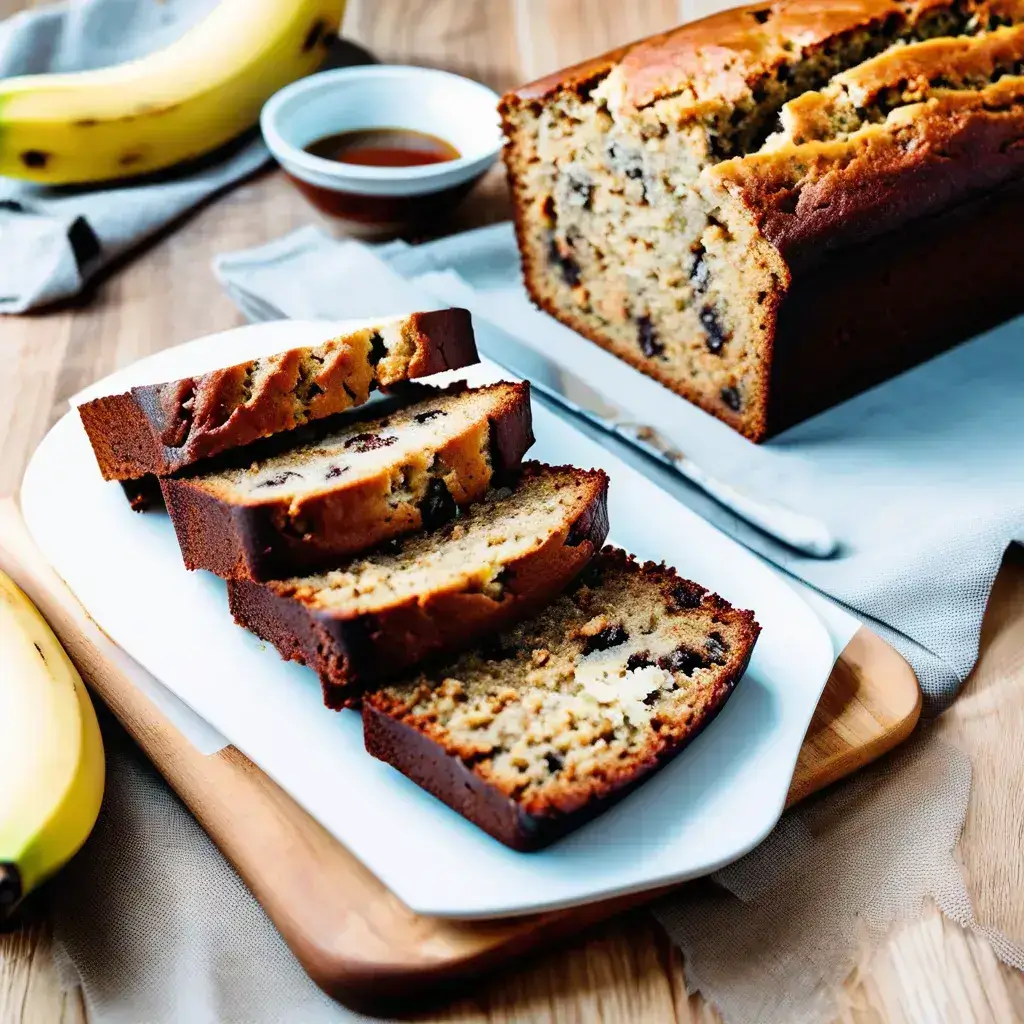
2 thoughts on “Banana Bread Recipe: How to Make the Perfect Loaf Every Time”